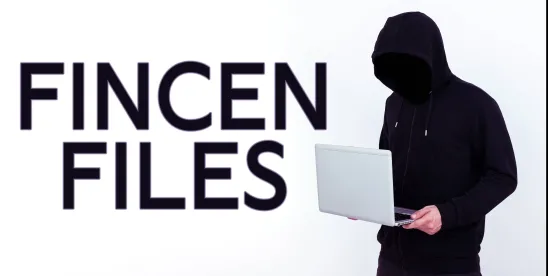The Corporate Transparency Act (“CTA”) requires most entities to file with the Financial Crimes Enforcement Network (“FinCEN,” a Bureau of the U.S. Department of the Treasury) Beneficial Ownership Information (“BOI”) about the individual persons who own and/or control the entities, unless an entity is exempt under the CTA from the filing requirement. There are civil and criminal penalties for failing to comply with this requirement.
A key issue: WHO are the Beneficial Owners?
FinCEN has issued a series of Frequently Asked Questions along with responses providing guidance on the issue of who the beneficial owners are.
Question A-1, issued on March 24, 2023, states that “[BOI] refers to identifying information about the individuals who directly or indirectly own or control a company.”
Question A-2, issued on Sept. 18, 2023: Why do companies have to report beneficial ownership information to the U.S Department of the Treasury? defines the CTA as “…part of the U.S. government’s efforts to make it harder for bad actors to hide or benefit from their ill-gotten gains through shell companies or other opaque ownership structures.”
Question D-1, updated April 18, 2024: Who is a beneficial owner of a reporting company? states that “A beneficial owner is an individual who either directly or indirectly (i) exercises substantial control over a reporting company” and, in referring to Question D-2 (What is substantial control?), “owns or controls at least 25 percent of a reporting company’s ownership interests.”
Question D-1 goes on to note that beneficial owners must be individuals, i.e., natural persons. This guidance is extended by Question D-2 on Substantial Control, where control includes the power of an individual who is an “important decision-maker.” Question D-3 (What are important decisions?) identifies “important decisions” with a pictorial chart of subject matters that FinCEN considers important, such as the type of business, the design of necessary financings, and the structure of the entity. Question D-4 explores ownership interests (again with a pictorial) including equity interests, profit interests, convertible securities, options, or “any other instrument, contract, arrangement, understanding, relationship, or mechanism used to establish ownership.”
Who, in FinCEN’s view, has “substantial control”?
Question D-2 lists four categories of those who have substantial control:
- A senior officer, including both executive officers and anyone “who performs a similar function;”
- An individual with “authority to appoint or remove certain officers or directors;”
- An individual who is an important decision-maker; or
- An individual with “any other form of substantial control.”
“Silent partners” and/or other undisclosed principals, including some who may be using the reporting company for nefarious purposes, might be discussed here, but that is not the intended subject of this writing. Rather, this piece is intended to warn businesspersons and their advisers of potential “stealth beneficial owners” – those whose status as beneficial owners is not immediately obvious.
First, consider the typical limited liability company Operating Agreement for an LLC with enough members and distribution of ownership interests so that no member owns over 25% of the LLC’s equity. If the LLC is manager-managed, then the manager(s) is/are Beneficial Owners, but the other members are not. But what if the Operating Agreement requires a majority or super-majority vote to approve certain transactions? Assuming that those transactions are “important” (as discussed in Question D-3), then possessing a potential veto power makes EACH member a beneficial owner. Such contractual limitations on executive power necessarily raise the issue of “beneficial ownership” in corporations, in limited liability companies, and even in limited partnerships where the Limited Partners have power to constrain the general partner (who clearly is a beneficial owner).
Second, consider the very recent amendments to the Delaware General Corporation Law (“DGCL”) in response to the Delaware Chancery Court’s holding in West Palm Beach Firefighters’ Pension Fund v. Moelis & Co (“Moelis”) Feb. 23, 2024. In Moelis, the CEO had a contract with the Company that materially limited the power of the Board of Directors to act in a significant number of matters. Vice Chancellor Travis Laster issued a 133-page opinion finding the agreement was invalid, as it violated the Delaware Law that placed management and governance responsibilities in the Board. Because such arrangements are frequently used in venture capital arrangements as part of raising capital for new enterprises, the Delaware Legislature and the State’s Governor enacted amendments to the DGCL that expressly authorize such contracts. In the Moelis situation itself, Ken Moelis was a major owner and CEO so he would have had to be disclosed as a Beneficial Owner if Moelis & Co. had not been exempt from the filing requirements of the CTA because it is a registered investment bank.
But what of a start-up venture entity where a wealthy venture investor owns a 10% interest in the entity, but has a stockholder agreement that gives him substantial governance rights including the ability to veto or even overrule board decisions? Is that venture investor not a “beneficial owner”? Somewhat even more Baroque, what about the private equity fund controlled by a dominant investor, say William Ackman or Nelson Peltz? If that fund invests in the same start-up entity and holds a 10% interest, but also has a stockholder agreement giving the fund substantial governance rights, isn’t the controlling owner of the fund a “beneficial owner” of the start-up?
Finally, consider financing with a “bankruptcy remote entity” where the Board of that entity includes a contingent director chosen by the finance source. The contingent director does not participate in any part of the governance of the entity unless the entity finds itself in financial distress. The organizational documents of the entity provide that at that point, the contingent director can veto any decision to file for bankruptcy protection. At that point, the contingent director apparently becomes a “beneficial owner” of the entity, with the CTA filing requirements applicable. A more interesting question is whether the contingency arrangement in the organizational documents makes the contingent director a “beneficial owner” from the inception of the financing. Further, with respect to bankruptcy, key questions remain unanswered, such as whether the trustee in a Chapter 7 bankruptcy proceeding or a liquidating trustee in a Chapter 11 bankruptcy proceeding has a reporting obligation under the CTA.
This piece is not intended to identify all the situations that may give rise to “Stealth Beneficial Owners.” Rather, its intent is to raise awareness of the complexities involved in answering the initial question – WHO is a “beneficial owner”?




 />i
/>i

